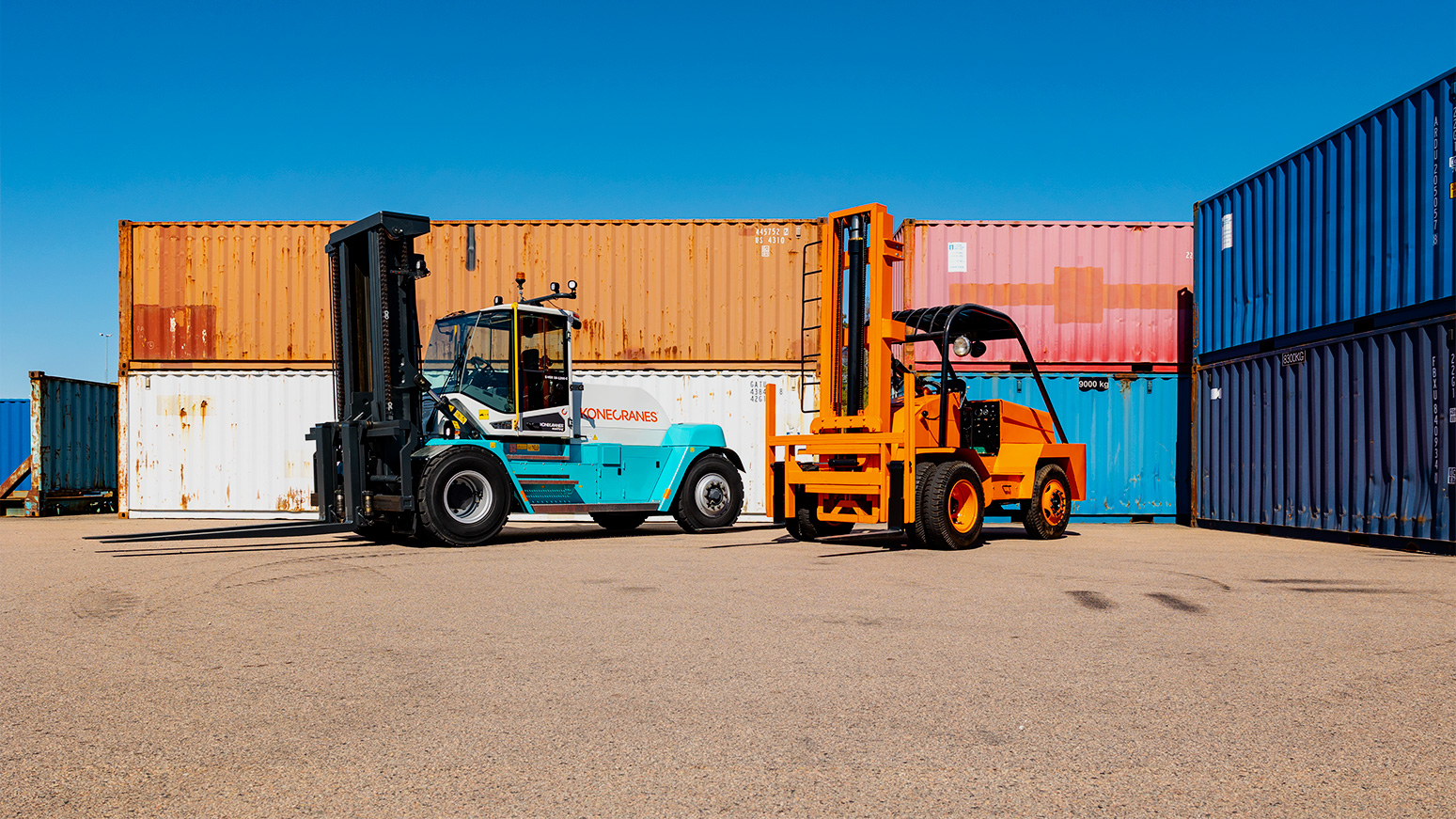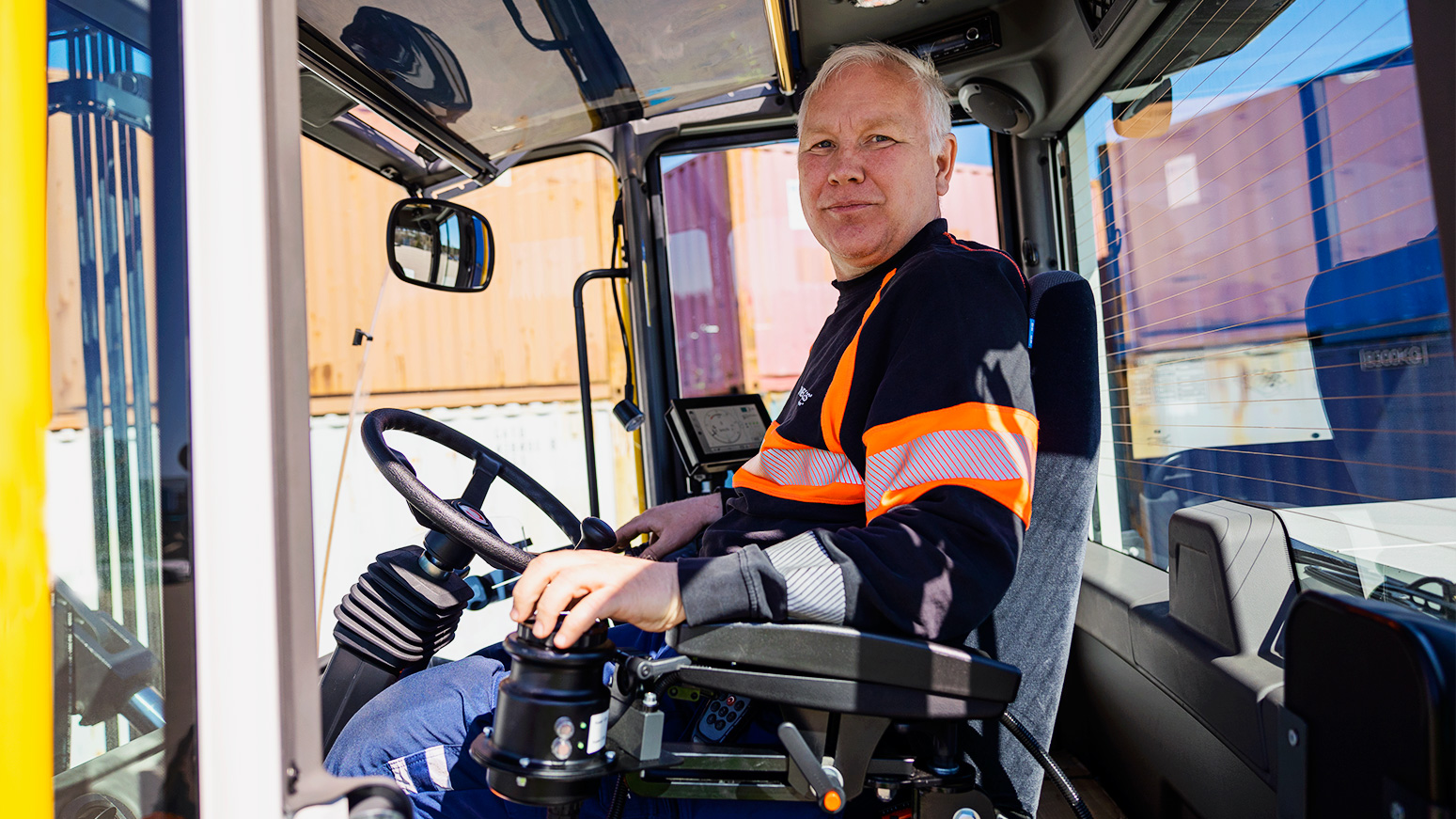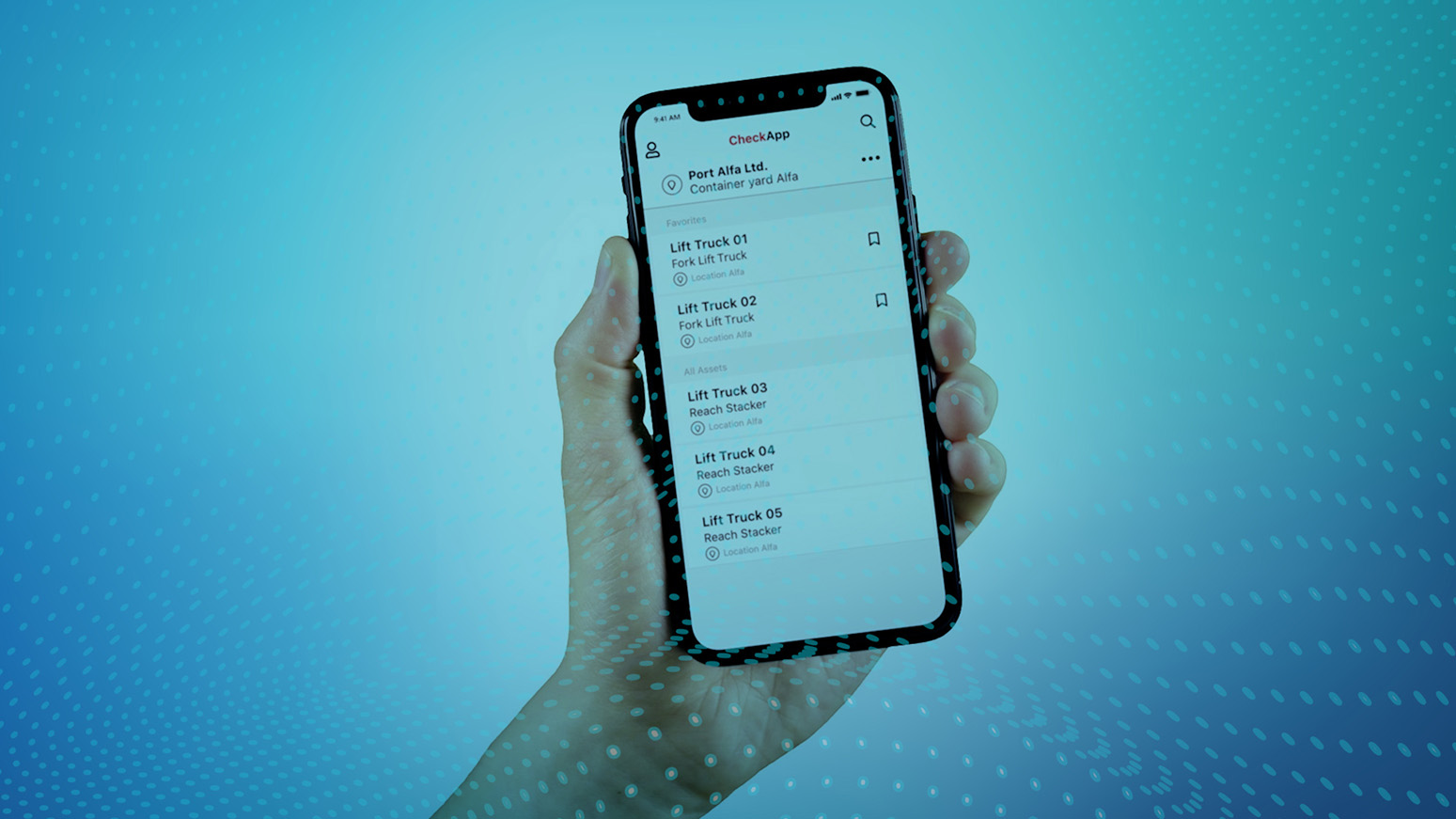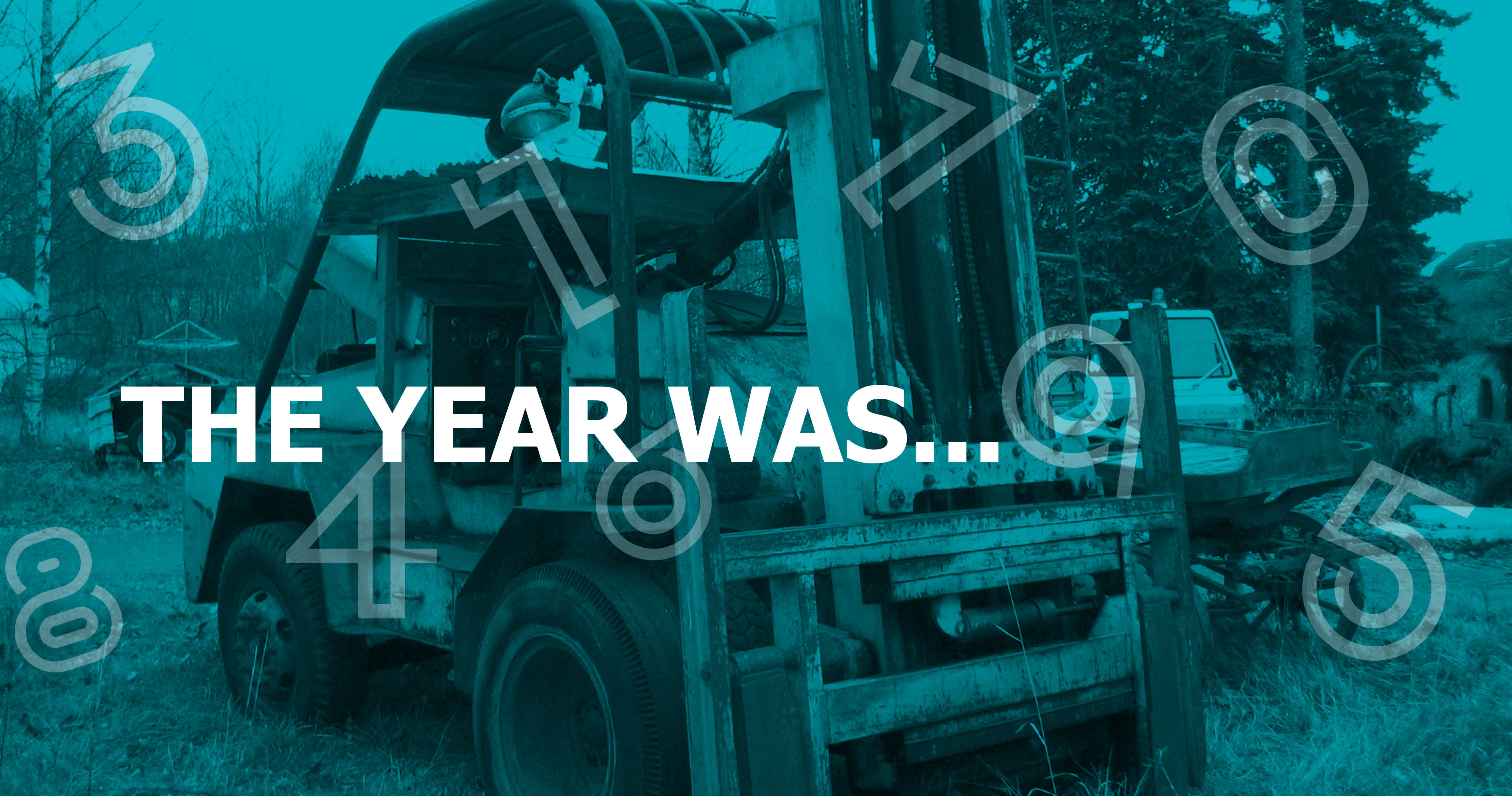Uplifting blog

Changing, and not, with the times
Konecranes Lift Trucks has always had the goal to set ourselves apart through innovation. In the earliest versions of forklifts and container handlers, a big part of that difference came from embracing electronics and digitalisation. Eventually and following the advances in technological capability, that commitment has led to the powerful electronic control units and intuitive touchscreen interfaces that come with a Konecranes today.
But not everything looks as radically different as the electronics. Modularity of parts and components was an original company strategy that continues to this day. In fact, many of the interfaces for parts connection, such as attaching the mast to the chassis, are pretty much the same as they’ve always been. And many mechanical components are interchangeable between and within brands, making maintenance and service simpler and smarter.
Growing up with technology
Digitalisation came early to Konecranes forklifts and container handlers. From the start, management and engineers recognized the potential for Controller Area Network (CAN-bus) technology and control units to solve technical challenges, create new functionalities—and set the company’s offer apart in a very competitive field.
“We committed to what was at that time a sophisticated electronic system,” says Anders Sjöstrand, Commercial Product Manager at Konecranes. “The control unit was used for a lot of simple functions, some sensors, some basic calculations, there wasn’t the huge diagnostic capabilities you see today. And when there was a display, it was very simple, essentially the size and capacity of a hand calculator.”
Roger Persson, Technical Product Manager, sees those early applications as a platform to what’s possible today—at Konecranes and for the industry. “We were at the forefront of the digital journey, and it made it possible for us to develop new automated functions. For instance, for calculating stability for vertical lifting with reach stackers, it had to be done manually until we introduced the computerised version in 1996. Today everyone offers it, but back then it was only us.”
Not surprisingly, today’s onboard control units and displays are significantly more powerful yet intuitive to operate. “It’s the area we’ve seen the fastest development,” says Roger. “It’s like comparing your laptop to one from 20 years ago.”

The benefits of having so much in common
One principle that looks a lot like it did from the start is modularity. Sharing components and systems was a new way of doing things that has since become a Konecranes Lift Trucks standard.
The modular build principle means you could conceivably add some of the latest C series components to an original A series chassis, and vice versa. “Customers absolutely appreciate it,” says Anders. “It makes it very easy to upgrade machines over time by swapping parts, prolonging its lifetime.”
Most notable is perhaps the consistency of interface designs over time. The steering axle interface has been more or less the same, for instance, since 1995.
Modularity makes equipment highly customisable. Simplifies parts procurement and production. And frees the engineering focus to be applied on more developments in other areas. “The modular concept has been consistent since the beginning,” says Roger. “But the contents of the modules, especially the electronics, are constantly evolving. We’re not standing still.”

Unmistakably Konecranes
In some ways, a Konecranes forklift or container handler won’t seem to have changed all that dramatically in the last 25+ years. In other ways, it’s a complete transformation.
A modular concept based on high quality, consistent, intuitive and reliable design. Coupled with an innovative digital platform that improves the driver experience and is always ready for the next big advance. A modern Konecranes is a seamless integration of the latest technology with tried and true mechanical standards—a combination that has helped lift customer businesses since 1995.
Everything we do is connected to innovation.
Related Articles

It's time for inspections to go digital
For as long as we’ve had heavy machinery, we’ve had daily and periodic inspections to make sure...
2 Minute Read

1956 – A new era of containerization
The shipping industry has been around for centuries, and during all those years goods were...
2 Minute Read

1917 – the very first lift truck is born
Today we see it as a matter of course to use lift trucks and reach stackers to handle goods in...
2 Minute Read






